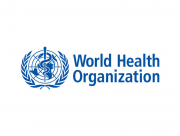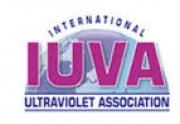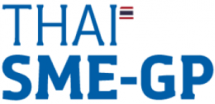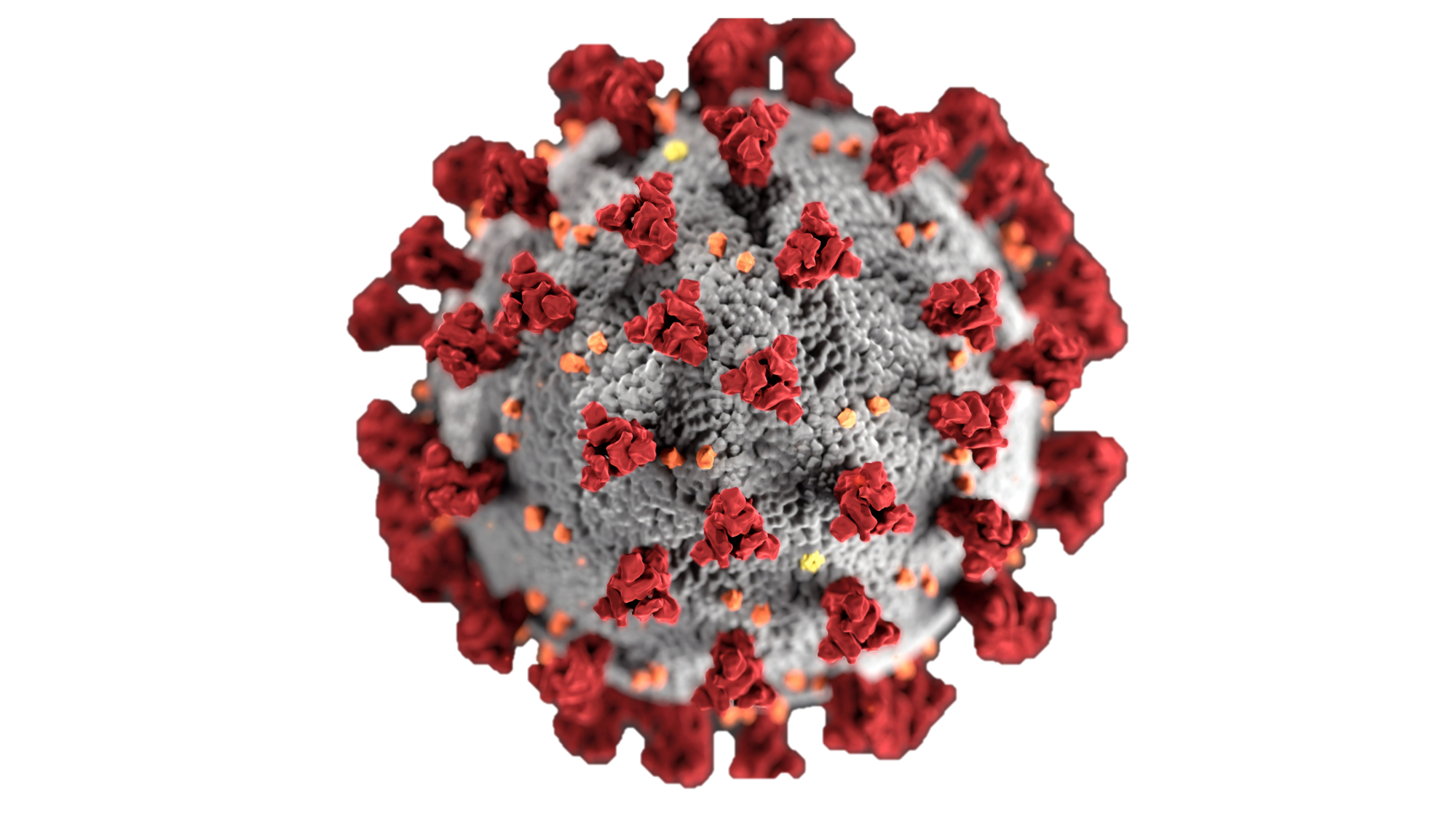COVID-19
ไวรัสโคโรนา หรือโควิด-19 คืออะไร ?
ไวรัสโคโรนา (Coronavirus) เป็นไวรัสที่ถูกพบครั้งแรกในปี 1960 แต่ยังไม่ทราบแหล่งที่มาอย่างชัดเจนว่ามาจากที่ใด แต่เป็นไวรัสที่สามารถติดเชื้อได้ทั้งในมนุษย์และสัตว์ ปัจจุบันมีการค้นพบไวรัสสายพันธุ์นี้แล้วทั้งหมด 6 สายพันธุ์ ส่วนสายพันธุ์ที่กำลังแพร่ระบาดหนักทั่วโลกตอนนี้เป็นสายพันธุ์ที่ยังไม่เคยพบมาก่อน คือ สายพันธุ์ที่ 7 จึงถูกเรียกว่าเป็น “ไวรัสโคโรนาสายพันธุ์ใหม่” และในภายหลังถูกตั้งชื่ออย่างเป็นทางการว่า “โควิด-19” (COVID-19) นั่นเอง
อาการเมื่อติดเชื้อไวรัสโคโรนาสายพันธุ์ใหม่ หรือไวรัสโควิด-19
อาการของไวรัสโควิด-19 ที่สังเกตได้ง่าย ๆ ด้วยตัวเอง ดังนี้

- มีไข้
- เจ็บคอ
- ไอแห้ง ๆ
- น้ำมูกไหล
- หายใจเหนื่อยหอบ
กลุ่มเสี่ยงติดเชื้อไวรัสโคโรนาสายพันธุ์ใหม่ หรือโควิด-19
- เด็กเล็ก (แต่อาจไม่พบอาการรุนแรงเท่าผู้สูงอายุ)
- ผู้สูงอายุ
- คนที่มีโรคประจำตัวอยู่แล้ว เช่นโรคหัวใจ เบาหวาน โรคปอดเรื้อรัง
- คนที่ภูมิคุ้มกันผิดปกติ หรือกินยากดภูมิต้านทานโรคอยู่
- คนที่มีน้ำหนักเกินมาตรฐานมาก (คนอ้วนมาก)
- ผู้ที่เดินทางไปในประเทศเสี่ยงติดเชื้อ เช่น จีน เกาหลีใต้ ญี่ปุ่น ไต้หวัน ฮ่องกง มาเก๊า สิงคโปร์ มาเลเซีย เวียดนาม อิตาลี อิหร่าน ฯลฯ
- ผู้ที่ต้องทำงาน หรือรักษาผู้ป่วย ติดเชื้อไวรัสโคโรนาสายพันธุ์ใหม่ หรือโควิด-19 อย่างใกล้ชิด
- ผู้ที่ทำอาชีพที่ต้องพบปะชาวต่างชาติจำนวนมาก เช่น คนขับแท็กซี่ เจ้าหน้าที่ในโรงพยาบาล ลูกเรือสายการบินต่าง ๆ เป็นต้น
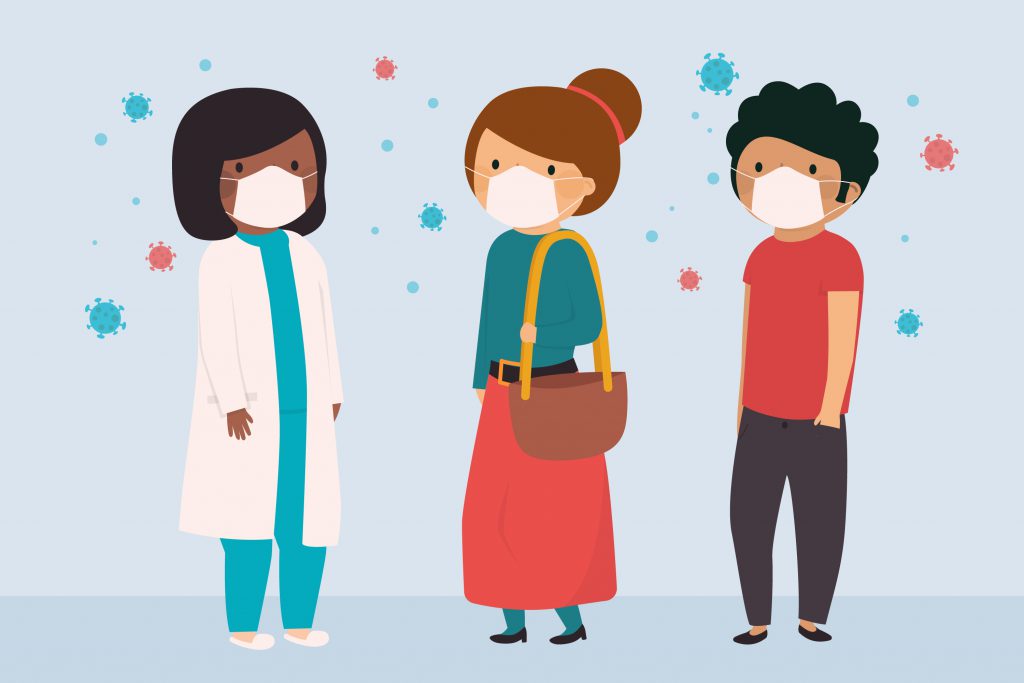
หากมีอาการโควิด 19 ควรทำอย่างไร ?
- หากมีอาการของโรคที่เกิดขึ้นตาม 5 ข้อดังกล่าว ควรพบแพทย์เพื่อทำการตรวจอย่างละเอียด และเมื่อแพทย์ซักถามควรตอบตามความเป็นจริง ไม่ปิดบัง ไม่บิดเบือนข้อมูลใด ๆ เพราะจะเป็นประโยชน์ต่อการวินิจฉัยโรคอย่างถูกต้องมากที่สุด
- หากเพิ่งเดินทางกลับจากพื้นที่เสี่ยง ควรกักตัวเองอยู่แต่ในบ้าน ไม่ออกไปข้างนอกเป็นเวลา 14-27 วัน เพื่อให้ผ่านช่วงเชื้อฟักตัว (ให้แน่ใจจริง ๆ ว่าไม่ติดเชื้อ)

วิธีป้องกันการติดเชื้อไวรัสโคโรนาสายพันธุ์ใหม่
- หลีกเลี่ยงการใกล้ชิดกับผู้ป่วยที่มีอาการไอ จาม น้ำมูกไหล เหนื่อยหอบ เจ็บคอ
- หลีกเลี่ยงการเดินทางไปในพื้นที่เสี่ยง
- สวมหน้ากากอนามัยทุกครั้งเมื่ออยู่ในที่สาธารณะ
- ระมัดระวังการสัมผัสพื้นผิวที่ไม่สะอาด และอาจมีเชื้อโรคเกาะอยู่ รวมถึงสิ่งที่มีคนจับบ่อยครั้ง เช่น ที่จับบน BTS, MRT, Airport Link ที่เปิด-ปิดประตูในรถ กลอนประตูต่าง ๆ ก๊อกน้ำ ราวบันได ฯลฯ เมื่อจับแล้วอย่าเอามือสัมผัสหน้า และข้าวของเครื่องใช้ส่วนตัวต่าง ๆ เช่น โทรศัพท์มือถือ กระเป๋า ฯลฯ
- ล้างมือให้สม่ำเสมอด้วยสบู่ หรือแอลกอฮอล์เจลอย่างน้อย 20 วินาที ความเข้มข้นของแอลกอฮอล์ไม่ต่ำกว่า 70% (ไม่ผสมน้ำ)
- งดจับตา จมูก ปากขณะที่ไม่ได้ล้างมือ
- หลีกเลี่ยงการใกล้ชิด สัมผัสสัตว์ต่าง ๆ โดยที่ไม่มีการป้องกัน
- รับประทานอาหารสุก สะอาด ไม่ทานอาหารที่ทำจากสัตว์หายาก
- สำหรับบุคลากรทางการแพทย์หรือผู้ที่ต้องดูแลผู้ป่วยที่ติดเชื้อไวรัสโคโรนาสายพันธุ์ใหม่ หรือโควิด-19 โดยตรง ควรใส่หน้ากากอนามัย หรือใส่แว่นตานิรภัย เพื่อป้องกันเชื้อในละอองฝอยจากเสมหะหรือสารคัดหลั่งเข้าตา
credit: https://www.gj.mahidol.ac.th/main/knowledge-2/covid19is/
ไวรัสโคโรนา หรือโควิด-19 คืออะไร ?
ไวรัสโคโรนา (Coronavirus) เป็นไวรัสที่ถูกพบครั้งแรกในปี 1960 แต่ยังไม่ทราบแหล่งที่มาอย่างชัดเจนว่ามาจากที่ใด แต่เป็นไวรัสที่สามารถติดเชื้อได้ทั้งในมนุษย์และสัตว์ ปัจจุบันมีการค้นพบไวรัสสายพันธุ์นี้แล้วทั้งหมด 6 สายพันธุ์ ส่วนสายพันธุ์ที่กำลังแพร่ระบาดหนักทั่วโลกตอนนี้เป็นสายพันธุ์ที่ยังไม่เคยพบมาก่อน คือ สายพันธุ์ที่ 7 จึงถูกเรียกว่าเป็น “ไวรัสโคโรนาสายพันธุ์ใหม่” และในภายหลังถูกตั้งชื่ออย่างเป็นทางการว่า “โควิด-19” (COVID-19) นั่นเอง
อาการเมื่อติดเชื้อไวรัสโคโรนาสายพันธุ์ใหม่ หรือไวรัสโควิด-19
อาการของไวรัสโควิด-19 ที่สังเกตได้ง่าย ๆ ด้วยตัวเอง ดังนี้
 |
|
กลุ่มเสี่ยงติดเชื้อไวรัสโคโรนาสายพันธุ์ใหม่ หรือโควิด-19
- เด็กเล็ก (แต่อาจไม่พบอาการรุนแรงเท่าผู้สูงอายุ)
- ผู้สูงอายุ
- คนที่มีโรคประจำตัวอยู่แล้ว เช่นโรคหัวใจ เบาหวาน โรคปอดเรื้อรัง
- คนที่ภูมิคุ้มกันผิดปกติ หรือกินยากดภูมิต้านทานโรคอยู่
- คนที่มีน้ำหนักเกินมาตรฐานมาก (คนอ้วนมาก)
- ผู้ที่เดินทางไปในประเทศเสี่ยงติดเชื้อ เช่น จีน เกาหลีใต้ ญี่ปุ่น ไต้หวัน ฮ่องกง มาเก๊า สิงคโปร์ มาเลเซีย เวียดนาม อิตาลี อิหร่าน ฯลฯ
- ผู้ที่ต้องทำงาน หรือรักษาผู้ป่วย ติดเชื้อไวรัสโคโรนาสายพันธุ์ใหม่ หรือโควิด-19 อย่างใกล้ชิด
- ผู้ที่ทำอาชีพที่ต้องพบปะชาวต่างชาติจำนวนมาก เช่น คนขับแท็กซี่ เจ้าหน้าที่ในโรงพยาบาล ลูกเรือสายการบินต่าง ๆ เป็นต้น

หากมีอาการโควิด 19 ควรทำอย่างไร ?
- หากมีอาการของโรคที่เกิดขึ้นตาม 5 ข้อดังกล่าว ควรพบแพทย์เพื่อทำการตรวจอย่างละเอียด และเมื่อแพทย์ซักถามควรตอบตามความเป็นจริง ไม่ปิดบัง ไม่บิดเบือนข้อมูลใด ๆ เพราะจะเป็นประโยชน์ต่อการวินิจฉัยโรคอย่างถูกต้องมากที่สุด
- หากเพิ่งเดินทางกลับจากพื้นที่เสี่ยง ควรกักตัวเองอยู่แต่ในบ้าน ไม่ออกไปข้างนอกเป็นเวลา 14-27 วัน เพื่อให้ผ่านช่วงเชื้อฟักตัว (ให้แน่ใจจริง ๆ ว่าไม่ติดเชื้อ)

วิธีป้องกันการติดเชื้อไวรัสโคโรนาสายพันธุ์ใหม่
- หลีกเลี่ยงการใกล้ชิดกับผู้ป่วยที่มีอาการไอ จาม น้ำมูกไหล เหนื่อยหอบ เจ็บคอ
- หลีกเลี่ยงการเดินทางไปในพื้นที่เสี่ยง
- สวมหน้ากากอนามัยทุกครั้งเมื่ออยู่ในที่สาธารณะ
- ระมัดระวังการสัมผัสพื้นผิวที่ไม่สะอาด และอาจมีเชื้อโรคเกาะอยู่ รวมถึงสิ่งที่มีคนจับบ่อยครั้ง เช่น ที่จับบน BTS, MRT, Airport Link ที่เปิด-ปิดประตูในรถ กลอนประตูต่าง ๆ ก๊อกน้ำ ราวบันได ฯลฯ เมื่อจับแล้วอย่าเอามือสัมผัสหน้า และข้าวของเครื่องใช้ส่วนตัวต่าง ๆ เช่น โทรศัพท์มือถือ กระเป๋า ฯลฯ
- ล้างมือให้สม่ำเสมอด้วยสบู่ หรือแอลกอฮอล์เจลอย่างน้อย 20 วินาที ความเข้มข้นของแอลกอฮอล์ไม่ต่ำกว่า 70% (ไม่ผสมน้ำ)
- งดจับตา จมูก ปากขณะที่ไม่ได้ล้างมือ
- หลีกเลี่ยงการใกล้ชิด สัมผัสสัตว์ต่าง ๆ โดยที่ไม่มีการป้องกัน
- รับประทานอาหารสุก สะอาด ไม่ทานอาหารที่ทำจากสัตว์หายาก
- สำหรับบุคลากรทางการแพทย์หรือผู้ที่ต้องดูแลผู้ป่วยที่ติดเชื้อไวรัสโคโรนาสายพันธุ์ใหม่ หรือโควิด-19 โดยตรง ควรใส่หน้ากากอนามัย หรือใส่แว่นตานิรภัย เพื่อป้องกันเชื้อในละอองฝอยจากเสมหะหรือสารคัดหลั่งเข้าตา


